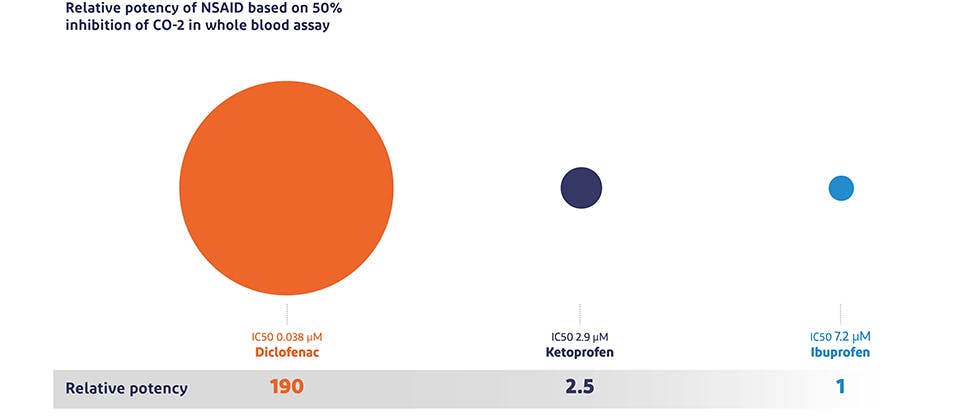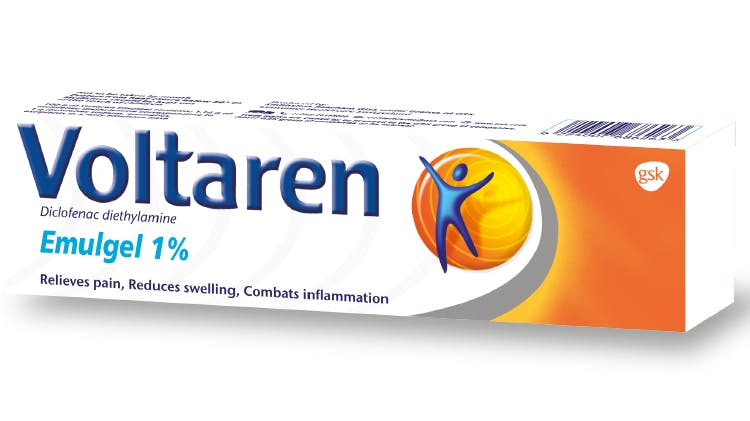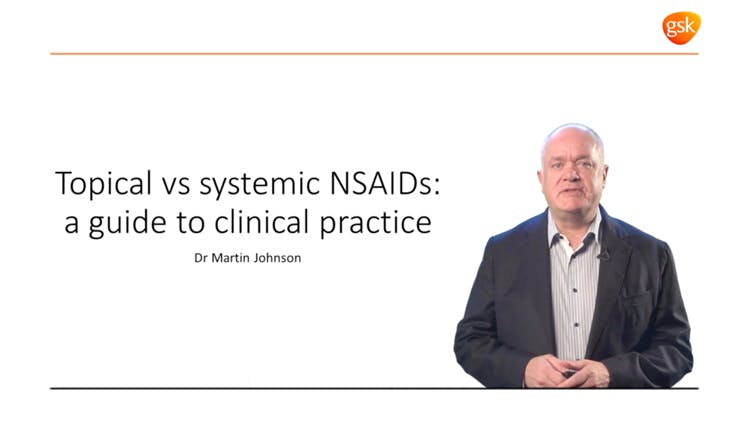Diclofenac
Acts through cyclo-oxygenase-2 (COX-2) inhibition, striking inflammation at its source
Learn how diclofenac reduces inflammation by inhibiting prostaglandin biosynthesis through action on the COX enzymes with selectivity for COX-2, and inhibiting phospholipase A2 activity to reduce the production of inflammatory leukotrienes.1,2,4

Diclofenac is a potent anti-inflammatory agent1
Its effect on the COX-2 enzyme means that, unlike non-NSAID medications such as paracetamol, diclofenac not only provides pain relief but also treats inflammation – a root cause of pain.2,4
Diclofenac, an NSAID (and therefore in the same drug class as ketoprofen and ibuprofen), shows marked potency in its inhibition of the COX-2 enzyme.5
Diclofenac targets inflammation to strike pain at its source
Diclofenac-containing products

Voltaren Emulgel 1%
100g Voltaren Emulgel contains 1.16g diclofenac diethylamine as active ingredient, corresponsing to 1g diclofenac sodium.6
For the symptomatic treatment of osteoarthritis of small and medium joints located close to the skin such as the finger joints or knee joints.6


